Conducting the Energy Assessment: Lighting
Let's take a look at some of the lighting questions in the survey!Now we’ll go through some of the questions asked in the lighting section of the survey and discuss why we’re looking at them.
L1: Do any rooms seem over lit by artificial light?
Spaces are often designed to be over lit because it’s easier to take out lights than to add new ones later. Unfortunately, it’s a wasteful practice and can actually be uncomfortable to occupants and counter-productive for workers. Although their are instruments such as light meters to measure this, one of the best ways to detect an overlit room or workspace is human detection. This will most likely be present in office workspaces where they have an abundance of overhead, fluorescent lighting.

Why Do We Care? To fix this, we recommend business’s “delamp” over lit areas, meaning they remove some of the bulbs in fixtures. So if a fixture has four florescent bulbs, maybe they remove one or two of them. Then, if an individual needs more lighting, they can offset it with a task light that only provides light for their surface.
L2: Are any lighting fixtures using incandescent light bulbs?
Incandescent bulbs are inefficient because they produce light by generating heat. They can easily be identified by their spherical shape. Compact Florescent Light’s (CFL’s) can typically be identified by their spiral shape.
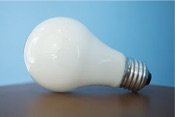
Standard Incandescent

CFL

LED
TIP: Still can’t tell the difference between an incandescent and LED bulb? Try this. Incandescent bulbs give off much more heat than an LED (which makes them less efficient), so try holding your hand close to the bulb to see if you can feel any heat coming off the bulb. If it’s hot, then it’s an incandescent, if it’s cool, it’s an LED.
L3: Are occupancy sensors installed in all applicable areas (i.e. restrooms, private offices, storage closets, etc.)?
Occupancy sensors are light switches that automatically turn lighting off after a period of inactivity. These switches are best suited for areas that are infrequently used such as restrooms, enclosed offices, supply closets, walk in refrigerators, and similar rooms.
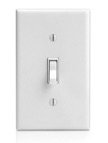
Manual Light Switch

Occupancy Sensor Light Switch
WDWC?: It’s extremely wasteful for a light to remain on when no one is in the room. If someone walks into a restroom, turns the light on while inside for five minutes and then leaves, it could be hours until someone else walks in. Occupancy sensors reduce wasteful lighting when no one is in the room.
L4: Do all individual work spaces have task lighting?
Task lighting is used to illuminate a specific work area, such as a desk. Task lights include traditional desk lamps or lights that are installed directly above a work area or under a desk cabinet, not in the ceiling.

WDWC? When used correctly, task lighting can provide greater occupant control and reduce the need for wasteful overhead lighting. Coupled with “delamping”, task lighting can be an excellent way to save energy and create a more productive work environment.
L5: Are all exit signs illuminated by LEDs?
Exit signs can be illuminated by incandescent, fluorescent, or Light Emitting Diodes (LEDs). Exit signs illuminated by incandescent or fluorescent bulbs are typically more box-like with the bulb inside of the sign. LED exit signs are typically transparent and much slimmer.

Non-LED Exit Sign

LED Exit Sign
WDWC?: Exit signs are illuminated 24/7, so that energy consumption adds up over a year. Since they’re required by building code, we want to make sure they’re as efficient as possible.
L6: Are T12 or 32W T8 fluorescent bulbs used in overhead lighting?
Fluorescent bulbs generally have a standardized code printed on the bulb to identify the type and wattage of the bulb. For example: F34T12 “F” (fluorescent) “34” (rated nominal wattage) “T” (indicates shape; this lamp is shaped like a tube) “12” (diameter in eighths of an inch; this lamp is 12/8 (1.5) inches in diameter). Other letters may follow this code such as “CW” (color; this lamp is a cool white lamp) or “RS” (mode of starting; the lamp is a rapid-start lamp). T12 and 32W T8 bulbs are now considered to be inefficient options compared to 28W or 25W T8 bulbs.


TIP: Can’t read what’s printed on the light bulb? Try taking a picture of it with your phone so you don’t have to hurt your eyes and you can zoom in to read what’s printed.
L10: *Do any lights remain on after-hours?
This will be a question to ask the business representative. A lot of businesses (especially retail) like to leave lights on even when the store is closed because they want people to still window shop and they think it’s better for security. Some business owners take this too far though and leave too many lights on after-hours which is extremely wasteful.
L11: Are any halogen PAR bulbs being used?
PAR light bulbs are often used for accent lighting, track lighting, and recessed lighting. PAR (Parabolic Anodized Reflector) light bulbs have a parabolic shape (U-shape) that collects and reflects light out of the front of the bulb, which gives them a cone-shaped look. PAR bulbs vary in size from a baseball-sized diameter to a softball-sized diameter and each bulb is labeled with a number to indicate the diameter of the face of the bulb. For example, a PAR38 bulb has a face diameter of 4.75 inches (38 eighths-of-an-inch).


Halogen PAR
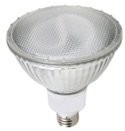
CFL PAR

LED PAR
WDWC?: Much like a standard light bulb, PAR bulbs can be incandescent (halogen), CFL, or LED. And just like a standard light bulb, LED is the most efficient option and halogen bulb’s can be easily distinguished by the amount of heat they give off.
L12: Are any halogen MR16 bulbs being used?
MR16 bulbs are typically used for accent lighting. They are small, typically 2-inches in diameter or less (comparable to the diameter of a golf ball). MR stands for Multi-faceted Reflector and much like a PAR bulb, the shape is used to collect and reflect the maximum amount of light out of the face of the bulb. MR16 bulbs can be incandescent (halogen) or LED.

Halogen MR16

LED MR16
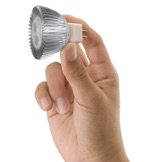
L13: Are any incandescent Edison-style bulbs being used?
Edison style bulbs are typically used in restaurants and retail stores for decorative or mood lighting. They can easily be identified as giving off a yellow or warm light and having exposed filament that you can see through the bulb. They get their name “Edison” bulbs because of the old fashion bulb style that they resemble.
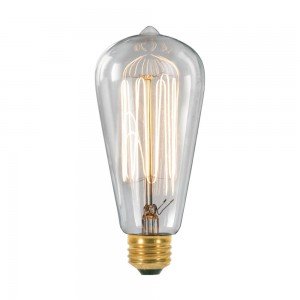
Incandescent Edison Bulb
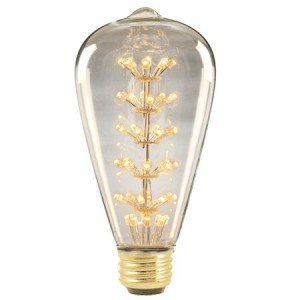
LED Edison Bulb
WDWC?: We get it, these bulbs look really cool. But luckily, they have some really great LED options that also give off that same mood lighting and look really cool, plus they’re much more energy efficient.
Now let’s take a look at the questions from the other sections of the survey.
